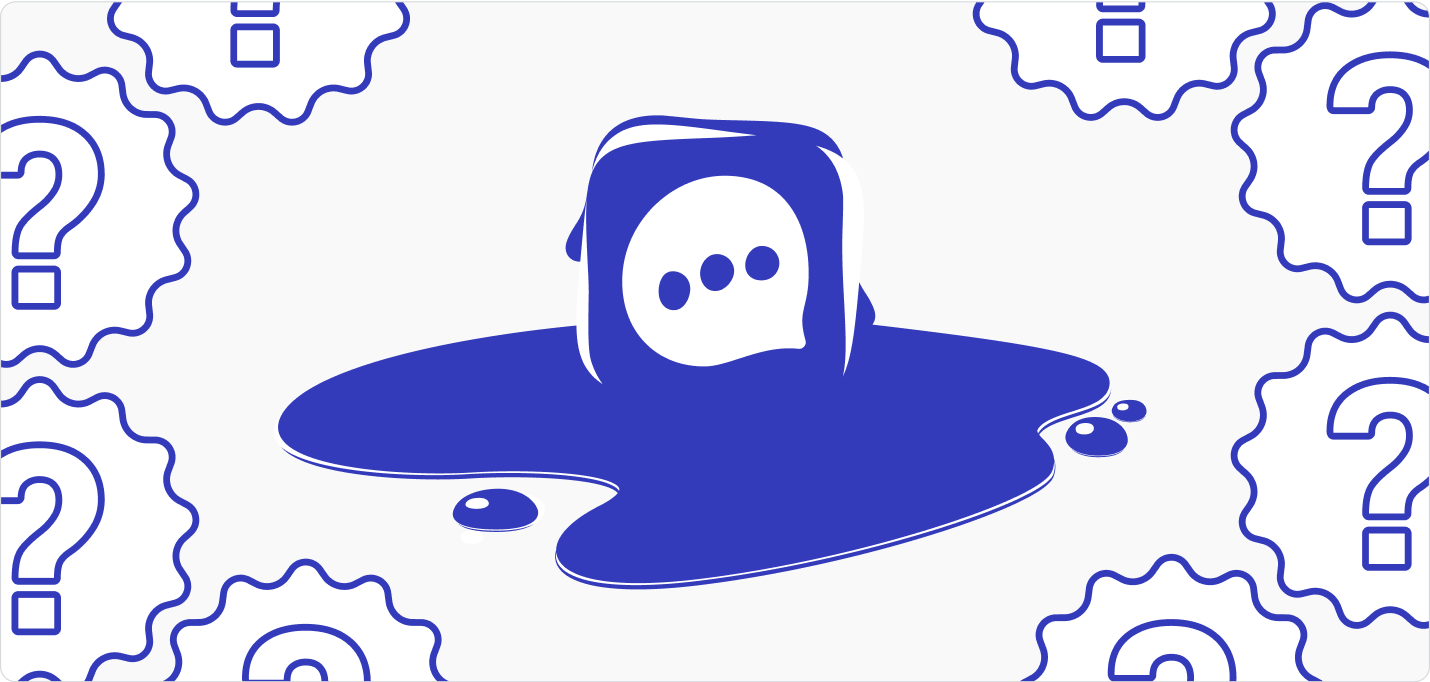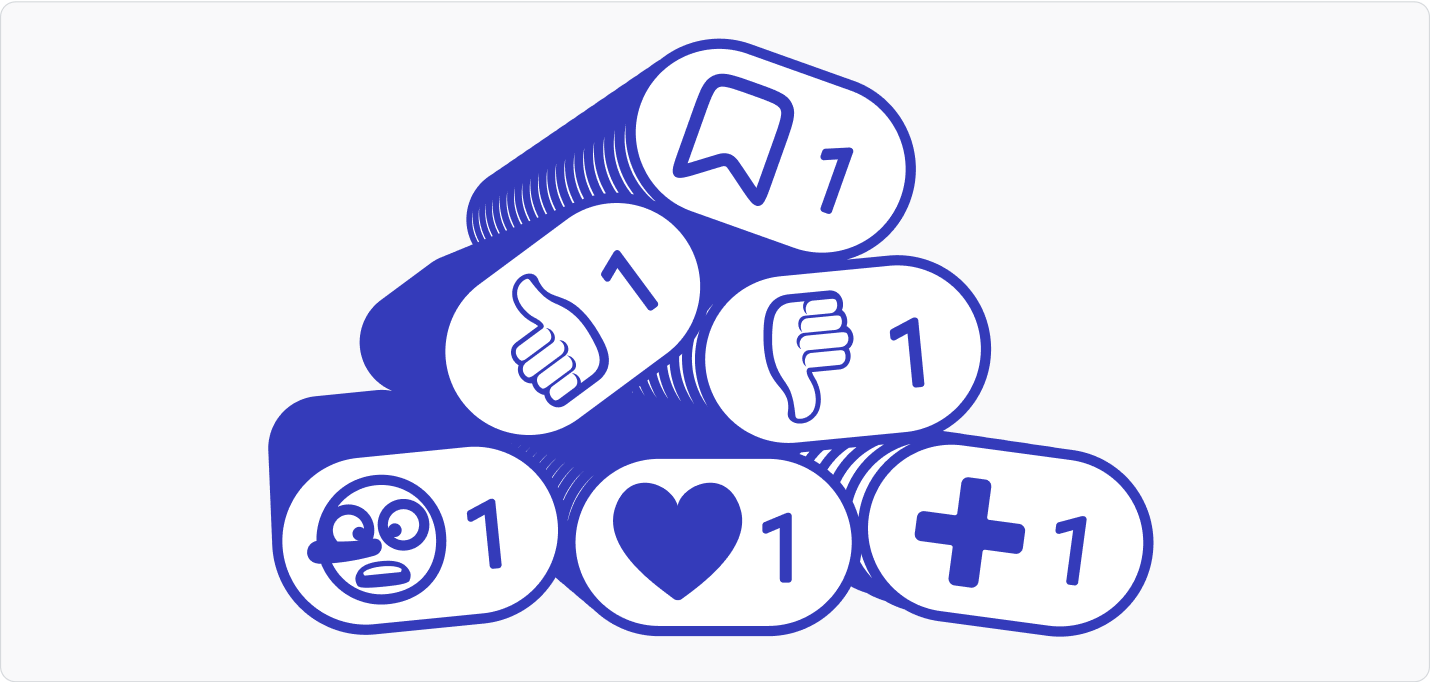Chat
How GenAI can help you learn as you go
One way to put the power of AI at your teams’ fingertips is through chat. This might take the form of a customer-facing chatbot that helps users find answers to their questions without help from your support teams. It could be an AI-powered chatbot for internal users, trained on your knowledge base to help employees find answers to their questions, work past blockers, and get up to speed on new technologies.
Whether it’s built for your customers, your internal teams, or both, an AI-powered chatbot can gather generated solutions to commonly encountered technical challenges and help users navigate your knowledge base, just like a human collaborator sitting at their side.
Let’s explore some best practices for integrating AI chat technology into your teams’ workflows, key features to look for, and some possible pitfalls to keep in mind.
Self-serve knowledge
We’ve come a long way since the days of Clippy. Now chatbots trained on your codebase or internal knowledge base can offer timely, relevant assistance to users without interrupting their flow states or forcing them to switch between platforms.
When it comes to coding tasks, the friendly, accessible chat interface helps democratize software development by making it easier for anyone to get started writing code. More experienced software developers and engineers can use AI chatbots trained on your codebase to unstick themselves when they get stuck or gain comfort with a new programming language.
Integration is everything
Chatbots can be built into familiar tools your employees are already using, from Slack to Stack Overflow for Teams. This kind of integration gives engineers and developers access to external knowledge resources without the need for costly context-switching: time- and attention-consuming switches to different platforms and delays while answers are sought, formulated, and delivered. The familiar, intuitive chat interface combined with natural language processing (NLP) makes asking questions of the AI as simple as pinging a colleague.
Best practices for building a value-add chatbot
AI can make the difference between a chatbot that adds huge value for users and one that’s merely an annoying pop-up (sorry, Clippy). But the best practices for building and implementing a chatbot still apply. Here are some to keep in mind as you develop your strategy:

Know what problem(s) the chatbot will solve
What friction points for users are you trying to address with the chatbot? Maybe people are taking too long to find answers to their questions, leading to wasted time and lost productivity. Maybe customers are peppering your support team with mostly-straightforward questions that a bot could answer easily. Thinking about how your AI-powered chatbot can solve at least one specific problem will help ensure that you build something people will find useful and valuable.

Don’t expect it to solve every problem
The other side of the coin is that you can’t expect a chatbot, even one powered by rapidly evolving GenAI technology, to solve every problem your users encounter. The goal of an AI-powered chatbot is to allow users to self-serve answers to their questions more quickly, without interrupting a knowledgeable human and jerking both questioner and prospective respondent out of their flow states. But there will still be times when an AI chatbot returns a nonsense answer or struggles to grasp the nature of the question. It’s important to recognize these inflection points and give users an easy way to connect with a human when they need it.

Improve as you go
This brings us to the good news, which is that AI chatbots add more value over time, as they learn from the questions and other input they receive and improve their ability to deliver specific, accurate answers. Giving direction and feedback to chatbots allows them to make themselves more useful to your users and your organization as a whole.
Data quality makes a difference
As with any other AI-powered tool, the quality of the information a model has access to has everything to do with the quality of its answers. AI models given access to incomplete or inaccurate information are likely to return illogical or incorrect answers, known as hallucinations. The information your AI-powered chatbot has access to should be complete, up-to-date, well-organized, and free of errors.
This is where a knowledge-sharing and collaboration platform like Stack Overflow for Teams becomes vital to the success of AI initiatives, from chatbots to advanced search and code completion.
Features to look for
AI chatbots aren’t interchangeable; there are specific features you should look for in building or shopping around for the right tool. Users should be able to:
- Ask questions/receive answers in natural language, to make the interface simple and straightforward for all users.
- Learn while solving actual coding tasks, as engineers and developers prefer.
- Integrate the chat technology with existing tools and workflows.
- Get an explanation for various problem-solving approaches rooted in your company’s internal knowledge base.
- Understand the context behind organizational best practices, based on your internal knowledge base.
Answers when and where you need them
Auto-Answer App for Stack Overflow for Teams automates access to essential knowledge at your organization, so your teams have the information they need when and where they need it. The app:
- Allows teams to spend less time and resources searching for and providing answers.
- Summarizes chat threads and posts as digestible Q&A content for future reuse.
- Sources information automatically without needing user commands.
Auto-Answer App integrates with Slack and Microsoft for Teams to give users access to insights from your knowledge community without the need for context-switching that costs time and energy. It searches your Stack Overflow for Teams instance and returns answers within your team’s preferred chat platform, without requiring user actions or accessing integrations. A familiar and intuitive chat interface makes it simple for any user, technical or not, to ask questions and get answers, work through coding problems, or locate the institutional knowledge they need to do their best work.